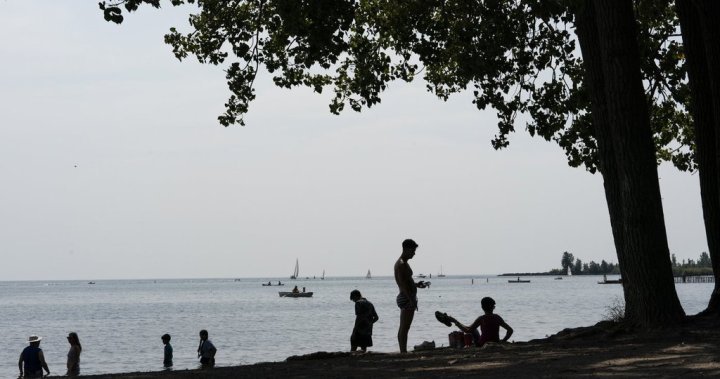The unusual weather affecting various parts of Canada can be attributed to the heat dome currently hovering over Ontario and Quebec.
Julien Pellerin, a meteorologist with Environment Canada, explains that the extreme heat in the eastern regions of the country is causing colder temperatures elsewhere, leading to alerts for wet snow and heavy rain in the West.
“When a heat dome exists in one area, the opposite typically occurs in another, which is happening right now in the Prairies,” Pellerin noted on Sunday.
“This high-pressure system, originating from the United States, moves slowly, bringing intense heat and humidity to southern Ontario and Quebec, and it will remain there for the next three days.”
The dangerously high temperatures stretch from southwestern Ontario to North Bay, Sudbury, and Timmins, while in Quebec, the hottest spots are expected to be from Montreal to Shawinigan and up to Abitibi.
Pellerin anticipates that Ontario and Quebec will experience their highest daytime temperatures on Monday and Tuesday, with readings surpassing 30°C. The humidex will make it feel like 40 to 45 degrees in various areas.

Get daily National news
Receive the day’s top headlines on news, politics, economics, and current affairs, delivered to your inbox daily.
“This heat won’t last long,” he added. “By Tuesday night into Wednesday, we can expect a shift in air masses across Canada, especially in Quebec and Ontario.”
In the meantime, the heat dome is creating unexpected conditions in other areas of the country.
On Saturday, Environment Canada issued a warning for British Columbia, indicating that some areas could experience heavy rain, with wet snow possible over higher highways.
In southern Alberta, heavy rainfall advisories were lifted by Sunday, but the region had already seen significant rain. Residents were advised to avoid the Bow River due to high water levels.
The Calgary Fire Department discouraged boating and other water activities on the Bow River, citing above-normal water flow, although flooding was not anticipated.
“Calgarians love their rivers, but when water flows are this high and fast, there is a considerable risk to everyone, regardless of their boating skill,” said Calgary Fire Deputy Chief Pete Steenaerts in a news release.
The Water Security Agency in Saskatchewan has alerted that the rainfall in Alberta could elevate water levels on the South Saskatchewan River, stretching from the Alberta border to Lake Diefenbaker.
To accommodate the additional runoff, Alberta began releasing water from its reservoirs this past week.
Lake Diefenbaker, a major recreational site located northwest of Regina, is expected to see its water levels rise by over a meter this week due to this weather pattern.
Rising temperatures in Ontario and Quebec have prompted Environment Canada to remind everyone to stay hydrate by drinking water regularly, monitor for signs of heat exhaustion, and avoid excessive exertion.
“Be cautious and listen to your body,” Pellerin advised.
“Ensure you take breaks, and find a cool place to rest with air conditioning.”
In Quebec, schools are being urged to remain vigilant as temperatures climb.
A letter from the assistant deputy education minister suggested schools implement all necessary precautions to protect everyone’s safety.
“Depending on the circumstances, these precautions might extend to closing one or more schools on June 23,” the message from Stephanie Vachon stated.
© 2025 The Canadian Press




